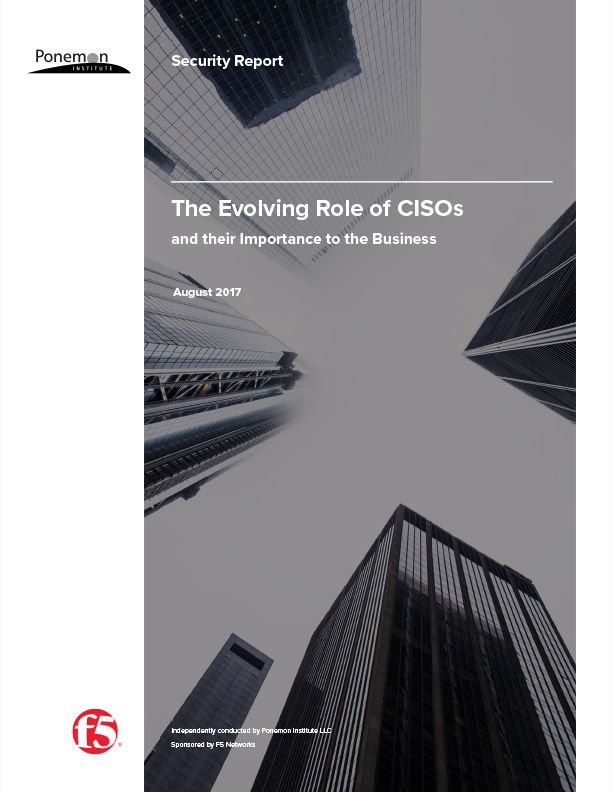CISOs are in a tough spot. Organizations are squeezed by cyber criminals, new compliance requirements, and bleeding-edge technologies that erode privacy and stability. The team that leads defense efforts is becoming a more and more vital player in the long-term survival of any organization that sells, uses, or produces information technology—that is to say, everyone. But what do we really know about CISOs and how they operate?

Download the full report now!
Several surveys talk about CISO salaries and job prospects, but we felt that the industry as a whole needed to fully understand what goes into the day-to-day job of a CISO. F5 and research firm Ponemon teamed to survey CISOs to draw as complete a picture as we could on the modern security executive. In the report, The Evolving Role of CISOS and Their Importance to the Business, we focus on key areas like budgetary control, organizational influence, decision rationale, and strategic methodology. In other words, how do CISOs succeed and how much power do they wield? We also delve into the background of CISOs and their experience, both in terms of technical capability and business savvy.
To cast a wide net, we interviewed senior level IT security professionals from 184 organizations in seven countries, tracking nearly 70 questions. We wanted a deep, unbiased look at the contemporary CISO. The results are eye-opening, and both encouraging and worrisome.
First, the discouraging news: security programs appear to be reactive: 60 percent of respondents said material data breaches and cyber security exploits are the primary drivers of change in security programs. And, just 22 percent of respondents say their organizations’ security function is integrated with other business functions. Perhaps most concerning, though, is that only 51 percent say their organization has an IT security strategy and, of those, only 43 percent say that strategy is reviewed, approved, and supported by C-level executives.
But there is good news, as well. Seventy-seven percent of respondents say their IT security operations are aligned with IT operations, although fewer respondents (60 percent) say they have achieved alignment of IT security operations with business objectives.
Furthermore, there are some promising trends in the day-to-day responsibilities CISOs hold. Most CISOs (67 percent) believe they should be responsible for setting security strategy, and the majority are influential in managing their companies’ cybersecurity risks, with 65 percent reporting to senior executives (that is, no more than three steps below the CEO on the organization chart). Over half (61 percent) set the security mission and are responsible for informing the organization about new threats, technologies, practices, and compliance requirements (60 percent). In the event of a serious security incident, more than half (60 percent) have a direct channel to the CEO.
These findings indicate both the challenges and the progress CISOs are making in today’s complex environment. I invite you to reflect on and discuss these findings with your peers. My hope is that we now have a foundation for more meaningful conversations with one another and have a greater impact on our organizations. I also hope the broader discussions we are driving here at F5 Labs are providing CISOs and future CISOs the tools to tackle this challenge.
There's a lot there, so dig in!


